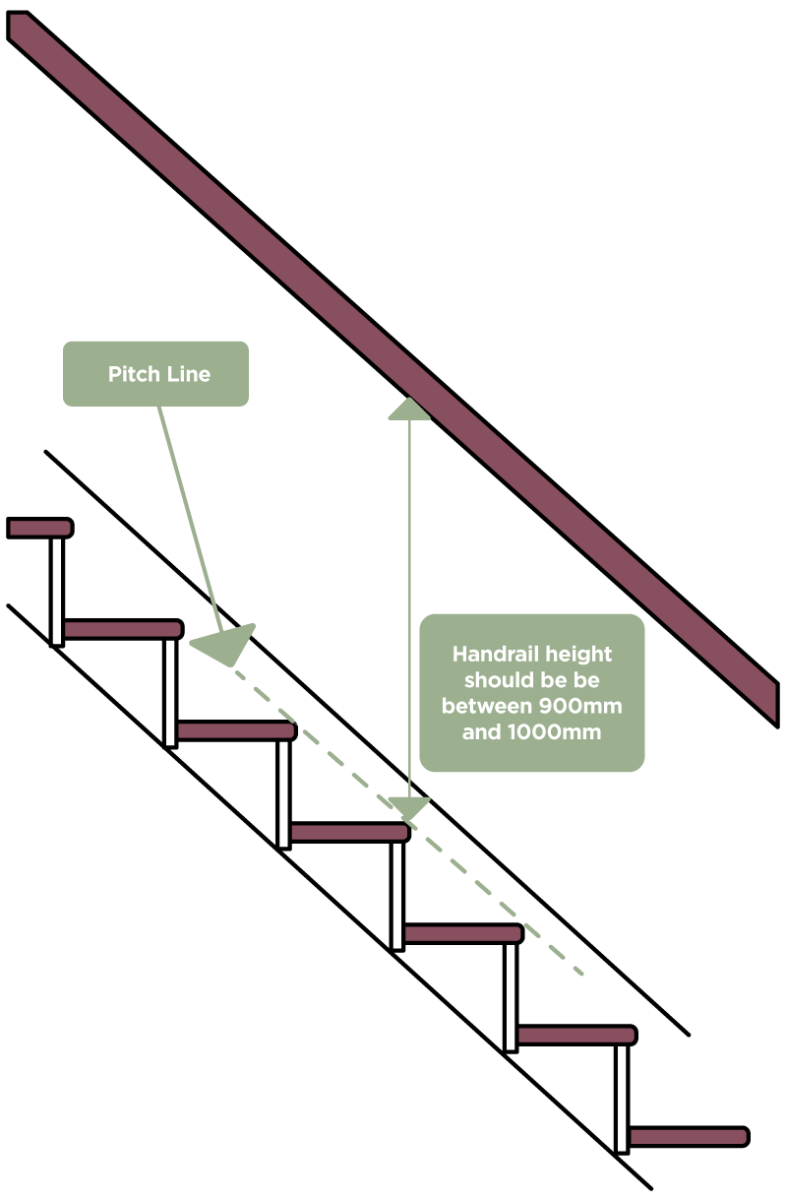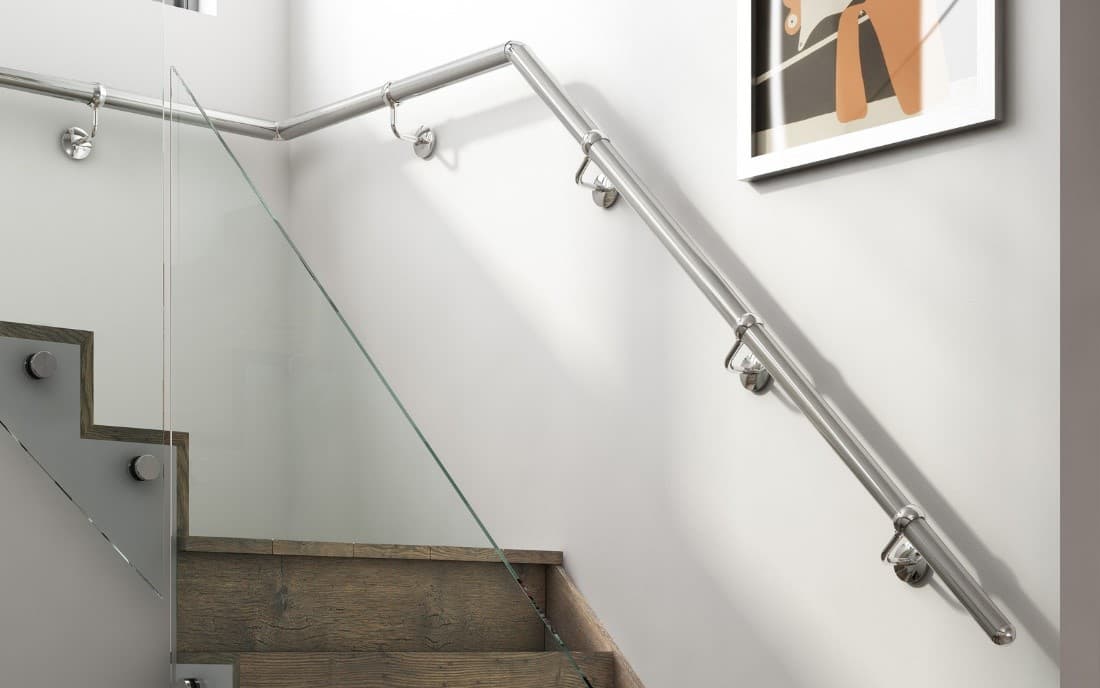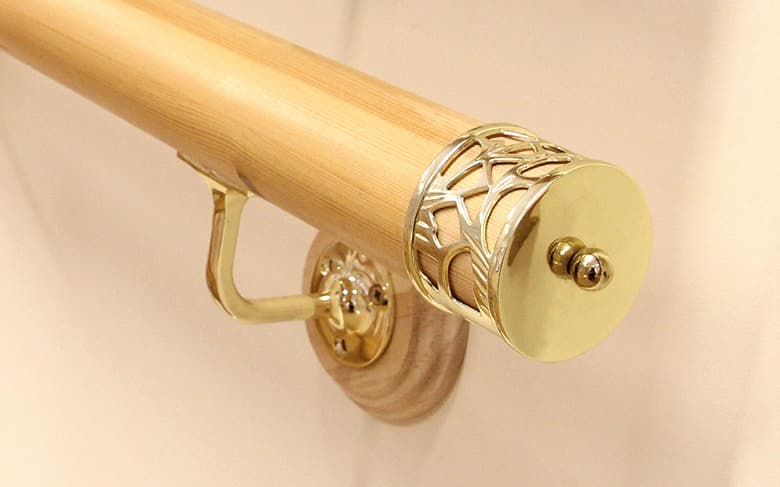What is the correct handrail size?
When shopping for a handrail, you have a range of factors to consider – including material, style, additional accessories, and more. However, one important aspect of choosing a handrail is getting the size right, to ensure you have a safe and supportive handrail that fits your staircase perfectly. If you don’t know where to start with choosing a handrail size – don’t worry.
Here, we explain how to choose the correct handrail size for your staircase – including a guide to the correct handrail length and height. We also discuss what is meant by a handrail groove and how to choose the correct groove size, as well as choosing handrail accessory sizes and options to dress up a wall mounted handrail.
Click on a link to jump to each section:
Find out whether it is a requirement to have a handrail on your staircase.
Read about the required length and height requirements for handrails.
Find out the necessary handrail accessory sizes and where they can be fitted.
Is measuring for a staircase important – or can you go without one?
Staircases require at least one handrail if the following applies:
-
The stairs are less than 1m wide: provide a handrail on one or both sides.
-
The stairs are wider than 1m: provide a handrail on both sides.
Handrails are important components of a staircase since they offer stability and protection to the person who is climbing up the stairs – particularly if you have children in your home.
A guide to stair handrail length and height requirements
What length should a handrail be, and how can you make sure a handrail is the right length?
To determine the correct handrail length, you can hook a tape measure onto the bottom stair nose and measure up to the top of the staircase. A staircase handrail should run the entire length of the stairs to make sure it is safe and code complaint.
Read our handrail FAQs for more information on measuring for a handrail.
How high should a stair handrail be mounted?
According to Part K Building Regulations - in a domestic property, the top of the handrail must be no lower than 900mm from the nosing of the stair tread to the top of the handrail. This 900mm height rule also applies to handrails on landings.
Your handrail should be fitted at a height between 900mm and 1000mm from the pitch line of the stairs, or the floor for landings. The pitch line is a virtual line that sits on top of the nosing at the edge of the stair treads. You can find out more about measuring the correct handrail height here.
For more information, read our full guide to measuring a staircase.

What is the minimum height for a wall mounted handrail?
Wall mounted handrails share the same height regulations as other types of handrails, which is a minimum height of 900mm.
You can read more about handrail height regulations in our guide What height should a staircase handrail be?
What lengths are handrails sold in?
Handrails are often sold in set lengths of 1.8m, 2.4m, 3.6m and 4.2m. Choose the best length that fits your staircase measurements.
Should the handrail and base rail be the same length?
Unless the stairs are diminishing or cut string, the handrail and base rail will usually be the same length.
On a landing, what height should a handrail be?
Handrail height on a landing should be the same as it is on a staircase—900mm and 1000mm above floor level, rather than the pitch of the stairs.
For more guidance on handrail sizes and regulations, read the full building regulation requirements for staircases in Part K Building Regulations Protection from falling, collision and impact on the Government’s website.
What is the maximum weight of a handrail?
Handrails in domestic properties must be able to withstand 0.36kN/m (kiloNewton metres).
Does a handrail need to be continuous?
Your handrail should run the full length of the staircase to ensure it is a secure and supportive as possible.
You can read more about handrails with our guide to handrails here.
How do you choose a handrail groove size?
The spindle sits within the groove of the handrail - a 32mm spindle would sit in a 32mm grooved handrail. For example, you can use this dark hardwood HR handrail alongside this dark hardwood Teesdale spindle. When choosing glass panels and glass grooved handrails – ensure the groove is large enough to fit the thickness and length of the glass panel.
Wall mounted handrail accessories - sizes and fitting requirements
Wall mounted handrails are available in both metal and different types of wood. Popular types of wall mounted handrails include pigs ear designs and mopstick handrails. Pigs ear handrails can be attached directly to the wall without the need for brackets, whereas mopstick handrails require handrail brackets.

Wall mounted handrail end cap sizes
End caps are designed to be fitted to wall mounted handrails, and are a great way to dress up your handrail. You need to match your end cap diameter to your handrail diameter. When choosing an end cap, you also need to ensure it will fit the shape of your handrail – for example, if you have a mopstick handrail, you need to match it to a mopstick end cap.

You can shop our full range of end caps here.
Where should you fit handrail brackets for wall mounted handrails?
When you’re installing a handrail, it’s a good idea to fit the brackets no more than one metre apart.
Fitting enough brackets will ensure your handrail is safe and secure.
At Jackson Woodturners, we offer handrail brackets in the following materials:
Are you unsure which handrail bracket to choose? View our full range here.
How many handrail brackets do you need?
For a standard 3.6m handrail, you’ll need four brackets.
What are wall mounted handrail kits?
A handrail kit comes with all the fittings need to install a new handrail in your home, including the handrail, and brackets/connectors and screws.
The handrails in handrail kits are designed only to work with the brackets provided, such as the handrail kits in the Fusion stair part range. Unlike most handrail brackets, which fasten to the underside of a complete handrail, the brackets in these kits connect sections of handrail together. The end result is a highly contemporary, wall mounted handrail.
Shop our full range of wall mounted handrail kits here.
